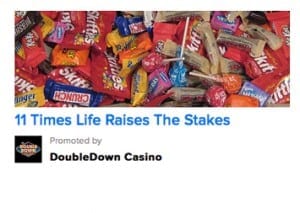Native Advertising and the Blurred Ad-Content Line
By L. Jasmine Kim
Since the days of “Mad Men,” the aim of advertisers has always been to create content that anticipates their audience’s immediate needs and interests.
In today’s market, that means native advertising. Brands are looking to position their messages in ways that are less intrusive. They want to more seamlessly integrate themselves in the user experience instead of paying for online banner ads that can be easily ignored. Presenting ads and sponsored content in the “native format” so that the advertising message can be seen within the content stream is crucial
With native advertising, the traditional lines between content and advertising are blurring—and this has raised concerns at some traditional news organizations that understandably want to maintain their editorial credibility. Advertisers and brand marketers want to retain their clientele and attract new ones, so they’re cautious when dipping the proverbial toe in the native advertising water.
 Here are some points to consider:
Here are some points to consider:
- Successful brands are incorporating it and using it – for example, sites like BuzzFeed have pioneered a new type of customized “viral content.” This incorporates the advertiser and brand’s content along with the publisher’s content, and can be easily shared on social media. They have created colorful and engaging lists of humorous or inspiring photos and animated GIFs, with minimal text commentary. Many of these BuzzFeed articles are pieces of sponsored content that generate brand awareness and traffic for BuzzFeed’s advertisers, but most people who share these articles don’t realize—or care—that what they are sharing is technically an “ad.”
- Often, native advertising works best when it does not have an explicit agenda connected to a brand. For example, this BuzzFeed piece, “10 Beautiful Places in the World that Actually Exist” is sponsored by Pepsi NEXT. It has a message (exploring exciting new places) that is somewhat related to the overall brand messages of the soda, but the content is not clearly advertising for a specific product. Instead, the content benefits the users (by giving them a series of beautiful photos to enjoy) and the brand benefits by getting residual traffic and brand halo effect from people clicking the link to the brand’s website or following the brand on Facebook or Twitter.
- The efficacy of banner ads is in an overall decline. Brand managers need to understand they can’t often expect their marketing messages to “go viral” on their own. Instead, for the best outcome, brand marketers should utilize native advertising by attach their messages (in a subtle, often barely noticeable fashion) to content that is more likely to be shared with a wider audience on social media.
- Native advertising is working better than other forms of online advertising. Did you know people spend almost the same amount of time reading native ad content as they spend on editorial content, and according to recent statistics from a variety of industry surveys, native ad content delivers stronger engagement rates than other forms of online advertising.
- Sponsored content is not just for viral photos and upstart websites – native advertising has gone mainstream with major established media companies such as Forbes (which, according to this news release, expects 30% of its total 2014 advertising revenue to come from its BrandVoice sponsored content program), Yahoo! (which offers Stream Ads that naturally blend into the overall content stream on sites like Yahoo! News, and Image Ads that use HD images for brand storytelling on Yahoo! properties such as Flickr on photo slideshows), and even the New York Times.
- Native advertising is an ideal fit for the new realities of mobile advertising. According to a report from BI Intelligence, mobile ad spending was up 83% in 2012, to $8.9 billion globally. Several industry studies have shown that native mobile ads deliver an average expansion rate/click-through rate of 1.37%, compared to average click-through rates of 0.35% for standard mobile banner ads, 0.14% for desktop rich media ads, and 0.1% for standard desktop banner ads.
- As more audiences draw their preferred news and content via social media platforms, social media is another key driver in the trend toward native advertising. As Facebook, Twitter, and other social media are viewed by an ever-expanding audience, the advertising message must be incorporated in the native format, in the content feed of Facebook and Twitter, for it to be seen by the users. Native advertising makes it easier to surgically target relevant audiences within the stream of content on Facebook and other social media sites.
What will your strategy be? Native advertising is a major growing force in the future of online marketing, as the online marketing environment continues to evolve in a way that delivers more of what users want: engaging, relevant and native content. By making their native ads and sponsored content relevant, engaging, and worthy of sharing with others, brands will create greater brand awareness and affinity, leading to higher clickthrough-rates, engagement and profits.
L. Jasmine Kim is CEO of MobSoc Media llc.





























